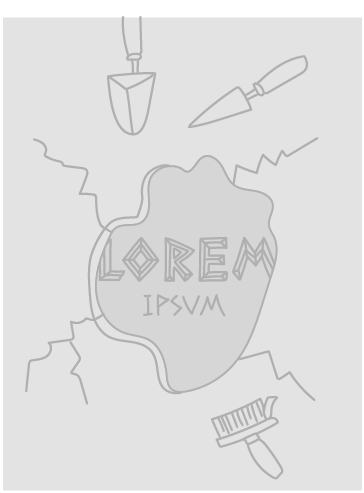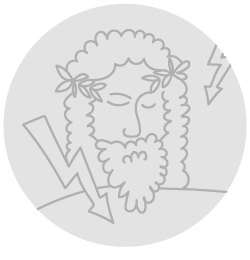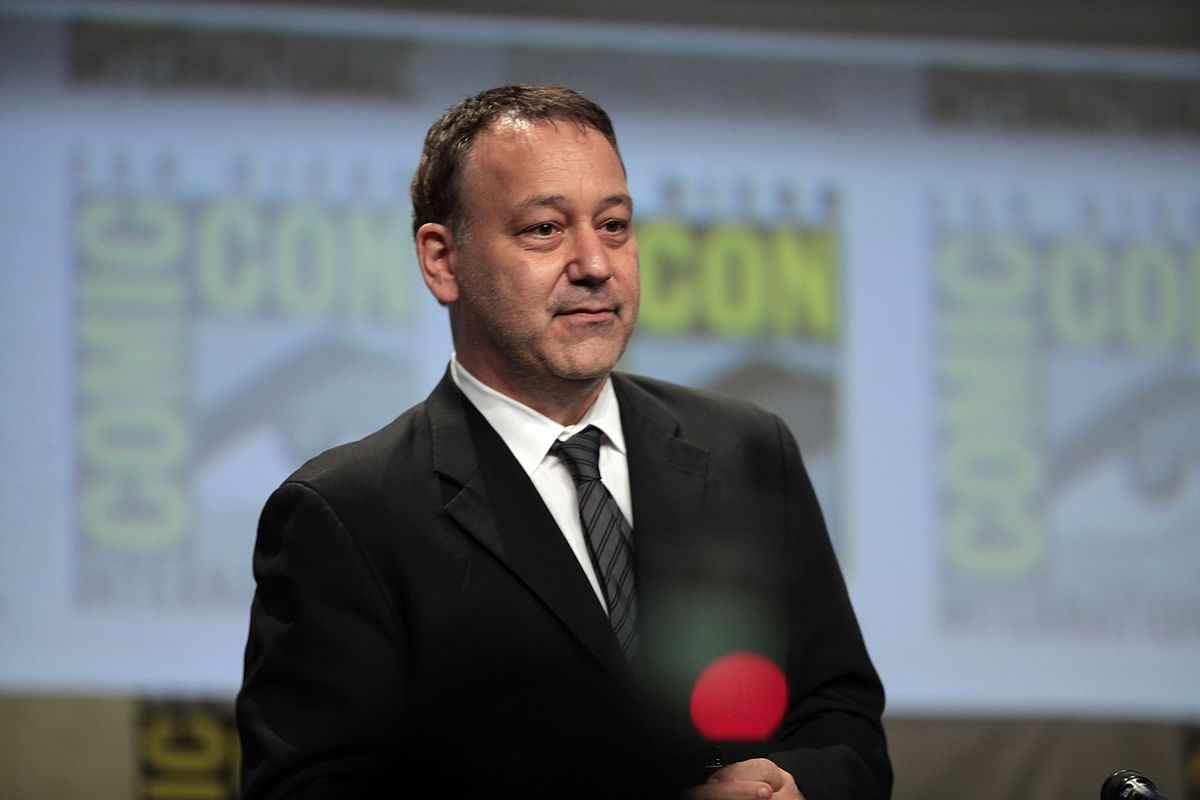Title of the work
Studio / Production Company
Country of the First Edition
Country/countries of popularity
Original Language
First Edition Date
First Edition Details
Young Hercules. Directed by Timothy J. Scott; written by Robert Tapert, Andrew Dettmann and Daniel Truly, screenplay by Andrew Dettmann and Daniel Truly. Fox Kids Network; August 30, 1998. 93 min.
Running time
Format
Genre
Action and adventure fiction
Fantasy fiction
Made-for-TV movies
Mythological fiction
Television series
Target Audience
Young adults (PG-13 rating)
Cover

We are still trying to obtain permission for posting the original cover.
Author of the Entry:
Joel Gordon, University of Otago, joel_gordon@hotmail.co.nz
Peer-reviewer of the Entry:
Elizabeth Hale, University of New England, ehale@une.edu.au
Elżbieta Olechowska, University of Warsaw, elzbieta.olechowska@gmail.com

Andrew Dettmann (Screenwriter, Scriptwriter)
Andrew Dettmann is an American television producer and writer. His output includes the serials CSI: Crime Scene Investigation (2000–2015 – working on three out of fifteen seasons), Numb3rs (2005-2010), Body of Proof (2011–2013), Chicago Med (2015–2018) and Wisdom of the Crowd (2017–2018). He worked extensively (alongside Daniel Truly) on the Hercules: The Legendary Journeys serial (1995–1999; writer and producer); four of the prequel television movies (writer): Hercules in the Maze of the Minotaur (1994), Hercules in the Underworld (1994), Hercules and the Circle of Fire (1994), Hercules and the Amazon Women (1994); and the spin-off/prequel franchise Young Hercules: both the 1998 film (writer and screenplay) and the 1998-1999 serial (writer). It is worth noting that he did not work on the HTLJ’s spin-off Xena: Warrior Princess (1995-2001). (for a full filmography see relevant IMDb entry, accessed: August 16, 2019)
Bio prepared by Joel Gordon, University of Otago, joel_gordon@hotmail.co.nz

Sam Raimi by Gage Skidmore. Retrieved from Wikimedia Commons, licensed under CCBY-SA 2.0 (accessed: December 30, 2021).
Sam Raimi
, b. 1959
(Producer)
Sam Raimi is an American filmmaker, actor and producer. He was born in Michigan (USA), to a conservative Jewish family, and attended Michigan State University. His career has been closely linked with that of Robert Tapert. Although Raimi intended to major in English, he chose to put his studies on hold in order to work on the feature film The Evil Dead (1981), after the success of his first co-operative production with Robert Tapert, The Happy Valley Kid (1977). Raimi is a co-founder of both Renaissance Pictures and Ghost House Pictures (see above). His solo-directorial work (distinct from productions with Tapert) include the original Spider-man trilogy (2002–2007) starring Tobey Macquire, and, most recently, Oz the Great and Powerful (2013). His most recent solo-producer role was for the crime-thriller, Don’t Breathe (2016). As an actor, Raimi has appeared in many of his own films as minor characters – such as his cameo appearances in The Evil Dead and its sequels. Raimi turned to television during the 1990’s, working together with Tapert as a producer for the franchises Hercules: The Legendary Journeys, Xena: Warrior Princess, Young Hercules and Spartacus.
Bio prepared by Joel Gordon, University of Otago, joel_gordon@hotmail.co.nz

Robert Tapert by Cooltv. Retrieved from Wikipedia, licensed under CC0 (accessed: December 30, 2021).
Robert Tapert
, b. 1955
(Author, Producer)
Robert Tapert is an American actor, producer and writer. Born in Royal Oak, Michigan (USA), he attended Michigan State University where he first began experimenting with filmmaking under the influence of Sam Raimi. During this time, they both worked on the film The Happy Valley Kid (1977) in which Tapert also starred in the leading role. Following the success of this venture, the pair began work on their first feature film, The Evil Dead (1981) – directed by Sam Raimi and starring Bruce Campbell – and, in order to assist with its production, Tapert, Raimi and Campbell (along with Irvin Shapiro) co-founded Renaissance Pictures in 1979. This trio have since worked together on numerous successful films – particularly in the horror genre – including: Crimewave (1985), Easy Wheels (1989), Darkman (1990), Lunatics: A Love Story (1991), Timecop (1994), 30 Days of Night (2007) and The Gift (2015). In 2002 Tapert and Raimi co-founded Ghost House Pictures known for, among others, the film franchises The Grudge (2004, 2006, 2009) and Bogeyman (2005, 2007, 2008). Tapert’s involvement in television began during the 1990’s with his most notable productions being the franchises of Hercules: The Legendary Journeys (1995-1999), Xena: Warrior Princess (1995–2001) and Young Hercules (1998–1999) – all of which included both direct-to-television movies and television serials spanning several seasons. It was during this period – in 1998 – that Tapert married New Zealand actress Lucy Lawless (the star of Xena), with whom he has since had two children. More recently, his interest in antiquity and television has returned with the serials Spartacus: Blood and Sand (2010), Spartacus: Gods of the Arena (2011), Spartacus: Vengeance (2012) and Spartacus: War of the Damned (2013) and plans for a Xena reboot for NBC. (see further, his official website, accessed: August 16, 2019).
Bio prepared by Joel Gordon, University of Otago, joel_gordon@hotmail.co.nz

Daniel Truly (Screenwriter, Scriptwriter)
Daniel Truly is an American television producer and writer. His output includes the series Law & Order: Special Victims Unit (1999-), Blue Bloods (2010-) and Under the Dome (2013-2015). Alongside Andrew Dettmann he contributed to the Hercules: The Legendary Journeys serial (1995-1999; writer and producer); four of the prequel television movies (writer): Hercules in the Maze of the Minotaur (1994), Hercules in the Underworld (1994), Hercules and the Circle of Fire (1994), Hercules and the Amazon Women (1994); and the spin-off/prequel franchise Young Hercules: both the 1998 film (writer and screenplay) and the 1998-1999 serial (writer). Like Dettmann, Truly was not involved in the spin-off Xena: Warrior Princess (1995-2001). (for a full filmography see relevant IMDb entry, accessed: August 16, 2019)
Bio prepared by Joel Gordon, University of Otago, joel_gordon@hotmail.co.nz
Casting
Hercules: Ian Bohen,
Iolaus: Dean O'Gorman,
Jason:Chris Conrad,
Yvenna: Johna Stewart-Bowden,
Ares: Kevin Smith,
Discord: Meighan Desmond,
Cheiron: Nathaniel Lees.
Adaptations
Young Hercules was novelized by Mel Odom, in several volumes (first published 1 July 1999 by Pocket Books).
Sequels, Prequels and Spin-offs
Summary
The Young Hercules franchise (cf. the 1998 serial of the same name, starring Ryan Gosling) is a spin-off/prequel to the Hercules: the Legendary Journeys franchise. The Young Hercules film also serves as a prequel to the Young Hercules serial (see here) and thus seeks to establish the main characters who appear in this latter production (i.e. Hercules, Iolaus, Jason, Ares, Discord and Cheiron). The narrative of the Young Hercules film is a re-telling of Jason and the Argonauts’ voyage to obtain the Golden Fleece.
Jason, the prince of Corinth, is a senior cadet at Cheiron’s academy for young warriors. It is here that he befriends Hercules and Iolaus who have been sent to the academy in order to stop them from causing trouble in their home town. Not long after his companions’ arrival, Jason receives a message that his father, King Aeson, is deathly ill and so Jason returns to Corinth accompanied by his new friends. King Aeson’s illness is the work of Ares and Discord who, nursing a grudge against their half-brother, seek to harm Hercules indirectly through attacking/hurting his friends (the audience is informed that Zeus had previously established a protection order preventing any of the gods from hurting Hercules directly). In order to get around Zeus’ divine directive, Ares disguises himself as Jason’s long-lost uncle Pelias who informs the young prince that only the Golden Fleece can save his father. Ares’ plan is that Hercules, who places such a high value on friendship, will accept this quest on behalf of his friend and will be killed attempting to complete it. Not to be easily deterred by the impending danger, Jason gathers his Argonauts: Hercules, Iolaus, a young female cadet named Yvenna (who functions as the object of Hercules’ adolescent sexual tension), Captain Attica (Yvenna’s cousin whose father – Argos – owns the Argo) and several named, but otherwise unimportant, cadets (Alcestor, Mikos, Liardis, Enyo and Thamus).
Having embarked on their quest, the Argonauts quickly encounter several dangers, including a storm and an island of temptation created by Discord. They catch sight of a beautiful woman (apparently in some form of distress), land on Discord’s island and are invited to partake in a feast. The food and drink is "poisoned" which causes them to turn mad and attack one another. Unfortunately, not all of the Argonauts survive the night having been fatally wounded during the drug induced aggressions. Pressing on, the remaining heroes arrive in Korsenia (the home of the fleece) and locate it quickly; however, once the fleece has been removed from its resting spot, its guardian appears – a giant named Talos – who attacks the crew. Although Hercules is ultimately successful in defeating the giant, he is too late to prevent Yvenna from being mortally wounded. The remaining Argonauts then return to Corinth – unfortunately, too late to save Jason’s father – and are attacked by Ares who reveals his true self. Jason is now mortally wounded by the god but, after Hercules defeats his half-brother in a duel, Jason is saved by the power of the fleece. The film closes with Hercules and Iolaus setting out on their next big adventure, discussing what the future might have in store for them.
Analysis
The Young Hercules franchise is, in many regards, a paradigmatic exemplar of depictions of Hercules on television produced during the mid-late 1990s. It was the last of several productions, produced during this period, which explored the life of Hercules: e.g. Hercules: the Legendary Journeys and Xena: Warrior Princess franchises; Disney’s television serial spin-off Hercules (1998–1999; 2 seasons). The franchise’s format – a pilot television film preceding a serial – is a repetition of the successful HTLJ formula which released five pilot television films prior to its own serial. (for further discussion of Young Hercules as indicative of the late 90’s interest in and style of depicting Hercules, see Young Hercules (serial) entry.)
Although the majority of the film’s characters carry over from the pilot into the serial, the titular Hercules does not. Ian Bohen, the star of the pilot-film (and was first cast as Young Hercules in flashbacks within various HTLJ episodes, e.g. Regrets... I've Had a Few (S04E03), was replaced by Ryan Gosling for the serial. The former did not want to move to New Zealand (the filming location) and so Tapert recast the role, modifying the serial to have a lighter tone which better reflected its new star. This was, in part, an attempt to better align the serial with its teenage target audience; however, it was also a clever marketing tactic to re-attract casual audience members’ from HTLJ and XWP who had become increasingly put-off by the darker and complex material within the "adult" serials: in Tapert’s own words, “anyone who feels that way [i.e. unhappy with the darker tone] is going to love Young Hercules, because it’s action and fun all the way.” (see here, accessed: August 16, 2019)
The Young Hercules film’s narrative telling of the Argonautic journey differs in many respects from extant versions known from antiquity (i.e. Pindar Pythian 4; Apollonius Argonautica; Apollodorus; Callimachus; Valerius Argonautica; Hyginus). Prominent examples of such changes to this traditional material include: Jason as the prince of Corinth; Yvenna and Captain Attica’s characters; Deimos’ island; the guardian Talos; and even the location of the fleece (i.e. Korsenia). It is also worth noting that the Argonauts who appear in Young Hercules are different from those mentioned in the HTLJ episode Once a Hero (season 2, episode 14: Hercules, Iolaus, Jason, Otus, Castor, Artemus, Valerus, Domesticles, and Lycenus).
Some of these differences are only minor adaptations of traditional components of the Argonautic narrative which serve to simplify an otherwise complex story. For example, although Jason is depicted by ancient sources as the prince of Iolcus, he later flees to Corinth (i.e. after the murder of Pelias) where he attempts to marry into the Corinthian royal family (see, e.g., Euripides’ Medea). By inserting him as the crown-prince of Corinth, Young Hercules removes the need to delve into the complicated questions surrounding Jason’s relationship with Medea and the infanticide which concludes this particular tradition. Likewise, Discord’s island serves as a combination of the island of the Sirens and the island of the Lotus Eaters (perhaps most famously recounted in Homer’s Odyssey; however, the former also appears in accounts of the Argonauts’ return voyage) and the episode of the Argonauts on the island of Lemnos. Thus, the rather lengthy journey of the Argo to the Fleece is shortened significantly in order to accommodate a reasonable run-time.
Other "divergent" components of the Young Hercules narrative are clearly driven by the teenage target audience. This is most evident in the creation of Yvenna and Captain Attica, who both fit the "teen" requirement of the film’s protagonists and removes the necessity of any adults being involved in the action (exceptions to this are Ares, Discord, and Cheiron). Yvenna also serves as a romantic interest for Hercules and provides the “sexy” component of the adventure which is promised by the DVD’s synopsis (thus also contributing to the film’s PG-13 rating). Hercules’ constant need for affirmation from his father Zeus is a theme which receives more attention within the serial itself (see the entry), but this driving force is still present here and has had a demonstrable effect on the shape of the narrative: this is not the Hercules of Greek mythology, but a troubled teenager. Uncertain of his own abilities and identity, Hercules is sent to Cheiron’s academy not because he is a worthy hero (like Jason) but because he is a troublemaker (who almost destroyed his hometown when his attempt to steal an item sacred to Zeus from Ares’ temple went horribly wrong). Nor is this the strong and courageous "loner" Hercules known from mythology who abandons the Argonauts mid-voyage in order to track down his missing companion Hylas (see Ap. Rhod. 1229ff). It is only through teamwork that this Hercules is able to overcome his weaknesses (and insecurities) and become the hero who "saves the day": for example, Hercules is unable to defeat Ares until Iolaus comes to his aid as his "feet", hoisting the hero upon his shoulders after he is injured.
Finally, some components of the film’s narrative appear to be drawn from wider fantastical and/or filmic traditions: the guardian of the fleece, for example, is traditionally a serpent named the Colchian Dragon (as appears in the opening scenes of Young Hercules in the temple of Ares) but the inclusion of Talos in this role may be a subtle nod to the giant created by Ray Harryhausen for the 1963 film, Jason and the Argonauts.
Further Reading
Crook, John, "Young Hercules" TV movie kicks off fantasy series, Kingman Daily Miner, 31 August 1998. Retrieved 16 March 2018, news.google.com (accessed: August 16, 2019).
Addenda
Translations: Spanish, French.


